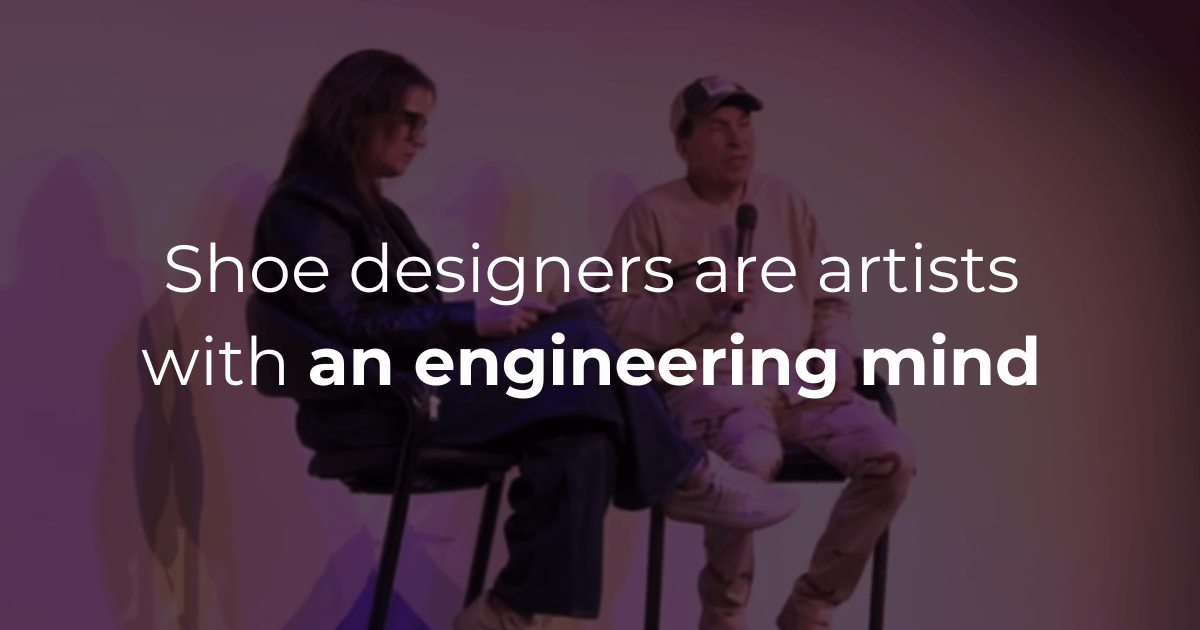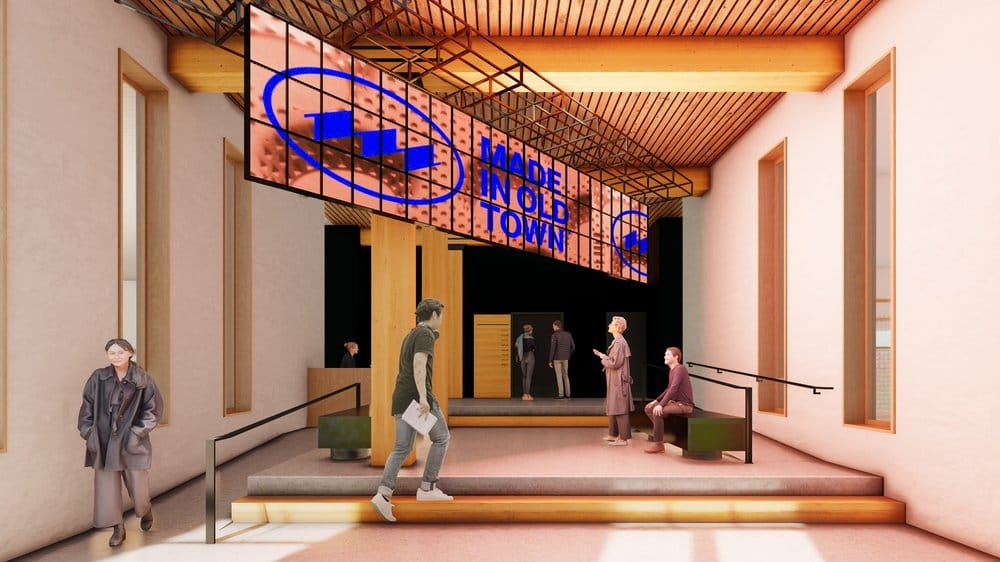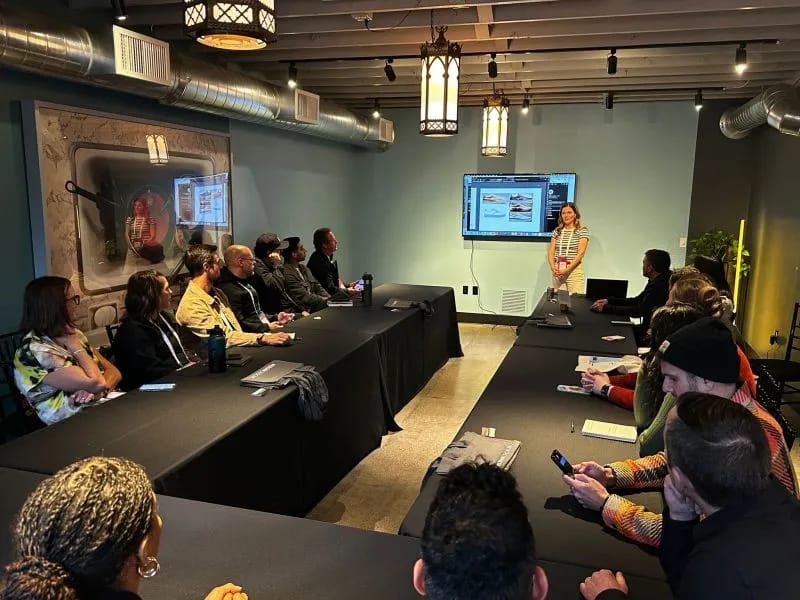- Creative Caffeine by Erin Bornstein
- Posts
- [Special Edition] Stride USA 2025 Insider Report
[Special Edition] Stride USA 2025 Insider Report
Why 40% of Footwear Products Fail (And How to Fix It).

Highlights from Stride USA 2025 Event
ReBorn Designs / Read Time: 9.5 min
Hey, it’s Erin!
Back on March 11-12, 2025, I attended Portland's Stride USA 2025 event where I gave 2 packed workshops - one on AI in Footwear, and another on storytelling in design.
The event was fantastic. Meeting people in person is so much more impactful than online. This has easily been my favorite event so far, bringing together a hugely passionate group of people, especially in the footwear space.
Everyone at the event is in the trenches every day, and the energy has been incredible.
Here are my highlights from the event.
Old Town & Industry Changes
The industry is losing skilled veterans, and there's a growing talent gap.
Made in Old Town (MiOT) is addressing this by building a world-class innovation hub for footwear and apparel in Portland.
Development Challenges: Product Failure & Costs
40% of products that go to market fail, costing businesses trillions annually.
Over 50% of the product process is spent in creation, with 70% of styles dropped at the end of development. Early design and material choices determine 80% of a product’s impact.
Steven Smith, Godfather of Sneakers: "Shoe designers are artists with an engineering mind—we create desire. Comfort remains king."
Future of AI & Design
Tools should focus on reducing anxiety and improving decision-making, not just speed.
AI-generated content is often fed by the same data pools, but the future will be driven by unique datasets and archives by brand.
"The best tool is the one people pick up on their own" – James Carnes. The best technology is the one that gets out of your way and lets you focus on the fun part of the job.
But if you want deeper insights, use the table of contents to navigate.
What interests you?

The Footwear industry is losing expertise.
As skilled professionals retire, there is a widening gap in technical expertise, craftsmanship, and manufacturing knowledge.
Portland, the world’s footwear capital, is facing this challenge head-on.
Enter Made in Old Town (MiOT) – a new world-class innovation campus set to open in 2026. MiOT is designed to train the next generation of footwear and apparel professionals, providing access to state-of-the-art equipment, manufacturing spaces, and mentorship from industry leaders.

Key Facts About MiOT:
Located in Portland's Old Town, a historic hub for footwear and apparel.
Will span 323,000 ft² across nine buildings, featuring:
80,000 ft² of advanced manufacturing space for sample-making and prototyping.
110,000 ft² of workforce housing to support professionals living and working in the city.
Focuses on sustainability, adaptive reuse, and community-driven programs.
Offers workforce development programs, internships, and training for early-career professionals and displaced workers.
Provides opportunities for brands, startups, and minority founders to innovate in footwear and apparel.
The future of footwear belongs to those who invest in craft, technology, and community. Made in Old Town isn’t just a space—it’s a movement to keep Portland at the forefront of global footwear innovation.
Read more here https://www.madeinoldtown.org/
Your Foot is Literally Shrinking After age 40
The highlight of the event was a Q&A session with Steven Smith, the Godfather of Sneakers.
Over 30+ years, he’s worked with leading brands such as Nike, Reebok, New Balance, FILA, and Yeezy, each making iconic designs lasting generations.
He covered many topics from A.I to design to business, but what stuck out to me was his perspective around disruption.
The most surprising revelation wasn't about aesthetics or materials, but biology: after 40, the fat pads in your heel diminish by 50%.
This isn't just trivia – it's a game-changer for design thinking.
As Steven Smith put it: "Shoe designers are artists with an engineering mind – we create desire." But desire without function is just fashion. Real innovation solves real problems.
This biological insight explains why comfort consistently outperforms aesthetics in market performance.
Brands that ignore this reality face higher failure rates regardless of their visual appeal.
True competitive advantage isn't just using AI
“The best tool is the one people pick up on their own”
When I presented my AI workshop on how I use Newarc and MidJourney (which ended up with designers literally standing against the walls to attend), the most revealing moment came during Q&A.
A designer from a major athletic brand admitted they'd been avoiding AI tools because they feared about IP issues and the skill gap learning a new tool.

The true competitive advantage isn't just using AI—it's creating proprietary datasets that reflect your brand's unique design language.
When used well, AI tools don't just generate options; they reduce the cognitive load that leads to decision paralysis. By helping teams visualize possibilities quickly, they create psychological safety to explore truly innovative concepts.
The key is to adapt rather than try to predict the future.
The best technology is the one that gets out of your way and lets you focus on the fun part of the job.
How to Make Sure Your Designs Get Approved
Steven Smith's approach reveals three actionable strategies that have helped my clients get breakthrough designs approved:
Lead with biological insights, not just visual innovation
When pitching new concepts, start with how they address physical needs rather than just aesthetic trends. Decision-makers respond to concrete problems being solved.Demonstrate how disruption reduces risk, not increases it
Frame innovative approaches as risk-mitigation strategies by showing how they address known failure points in traditional designs.Create a transition path, not just an end state
Show how your disruptive design can evolve from existing frameworks rather than requiring complete replacement of current processes.
At Reborn Designs, we've refined these approaches into our Three-Option Framework that consistently gets innovative designs approved:
Option A: The safe, expected solution
Option B: A moderate innovation that builds on existing frameworks
Option C: The breakthrough concept that addresses fundamental problems
By presenting this spectrum, clients can see how seemingly radical ideas connect to their current reality, making disruption feel less threatening.
If you’re ready to get your designs approved by clients, book a call here.
Want to Future Success? Understand the Past
The most successful disruptors aren't just forward-thinkers – they're deeply grounded in historical context.
"It's hard because if it wasn't for those of us in those early days – myself, Tinker, Wilson Smith, Bruce Kilgore, Kevin Brown – making this cool to want to do, there wouldn't be so many people wanting to do it," Smith reflected.
This perspective highlights why at Reborn Designs, we emphasize Holistic Design – understanding the complete evolution of a product category before attempting to disrupt it.
What This Means for Your Next Design Review
Next time you're facing resistance to innovative concepts, remember:
Ground your pitch in biological reality, not just aesthetics
Show how your design reduces long-term risk rather than increasing it
Present a spectrum of options that connects the familiar to the revolutionary
Demonstrate deep knowledge of historical context for your category
These approaches have consistently helped our clients push boundaries while still getting approval from even the most conservative decision-makers.
Cheers!
Erin

Powered by ReBorn Designs
PS: If you’re ready for more, here are other ways I can help:
If you have any questions, reply to this email.
Need more guidance? Hop on a Discovery Call & let’s talk more.
Follow me on LinkedIn for bite-sized tips throughout the week (free)